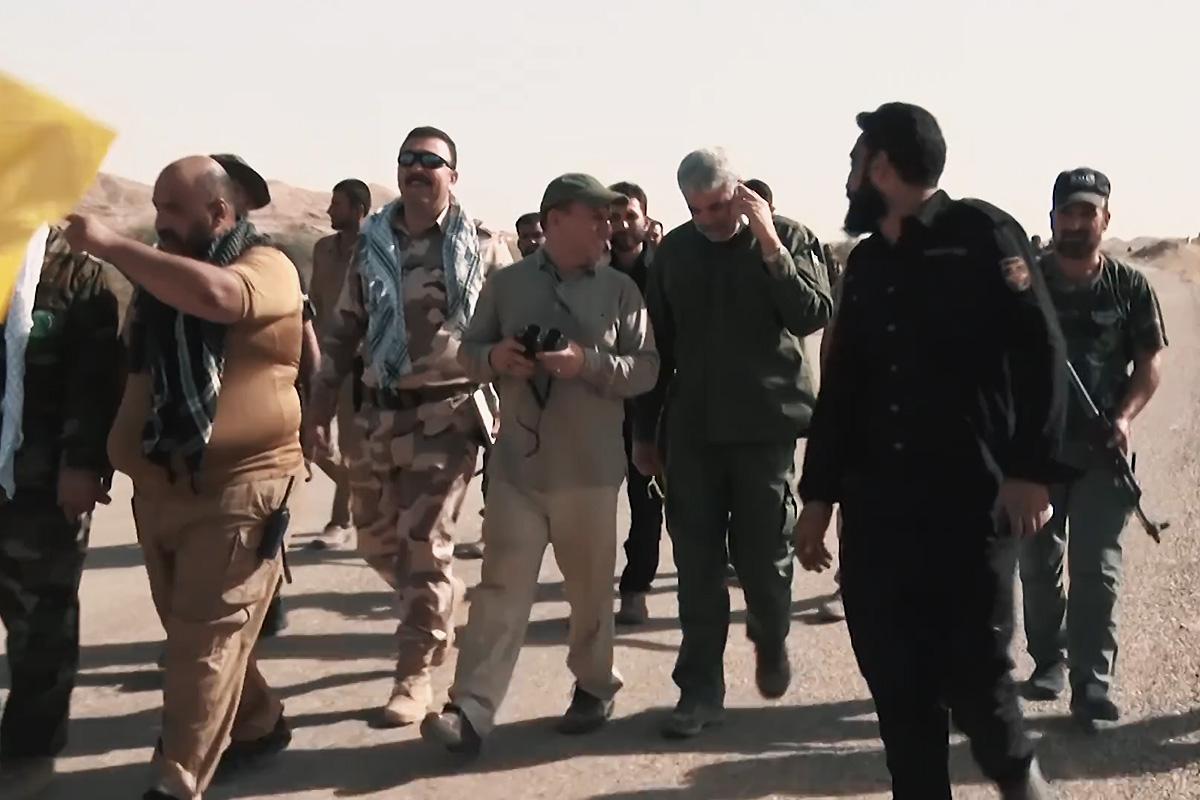Iranian Control of Strategic Kurdish Mountain Poses Serious Threat to Israel, Top Security Official Says
Iranian control of a strategically significant Kurdish area near the border between Iraq and Syria represents a grave security threat to Israel, a senior Kurdish security official told The Algemeiner on Wednesday.
The official, who spoke on condition of anonymity, said that Iran had coveted the mountainous Sinjar region — which spans from northwestern Iraq into eastern Syria — for “at least ten years.” In 2014, Sinjar was conquered by ISIS terrorists who went on to commit genocide and other war crimes against the region’s ancient Yazidi minority. After ISIS was driven out of the area by Kurdish peshmerga this year, Iranian-backed paramilitaries, among them the Hashd al-Shaabi, the Badr Organization and the Khorasani Brigades, began attacking the Kurds for control of the newly-liberated lands.
The same paramilitaries played a central role in the Iranian-coordinated assault on Kurdistan last month, following a 93 percent vote in favor of independence in the September 25 Kurdish referendum.
The official added that he had received reports claiming the Khorasani Brigades, an Iraqi Shia group affiliated with Iran’s Islamic Revolutionary Guard Corps (IRGC), were building a “military base” on Mount Sinjar – at 4,800 ft, the region’s highest point. Kurdish media outlets have also reported on a continued stream of Iraqi army officers and Hashd al-Shaabi fighters onto the mountain and in the town of Sinjar beneath it. Hashd al Shaabi’s commander Abu Mahdi al-Muhandis – designated for terrorism by the US State Department – has been sighted in the area on several occasions.
The area contains several Yazidi holy sites, including the Sharfadin shrine on Mount Sinjar itself. “This is an important place for all of us as Kurds,” the Kurdish official said. “The area is known for its Yazidi population, and there are Muslims and Christians there too. But it is also a place that presents a threat to Israel, and to other countries in the region.”
The nature of that threat, according to the official, was demonstrated during the First Gulf War in 1991, when there was a consistent high-level Iraqi military presence on Mount Sinjar, even though the area was never targeted by Western coalition aircraft during the conflict. Some have claimed that the Iraqis launched their Scud missile attacks on Israel and Saudi Arabia during that conflict from Mount Sinjar — although Tel Aviv, which lies about 500 miles to the west, would have been out of range of even the most advanced Scuds at the time.
Numerous eyewitness reports confirm that significant Iraqi military activity was taking place on Mount Sinjar going back to the late 1970s, when Saddam Hussein’s regime began testing missiles at a facility there. In an article published in May, the Israeli journalist Seth Frantzman quoted two Kurdish witnesses who recalled that in 1991 there had been “red fire” while “Iraq was bombarding Israel from the mountain.” Frantzman also quoted a sergeant from Britain’s elite SAS regiment, who said that he too had seen “a great big ball of light…a fireball” on Mount Sinjar, as well as Scott Ritter, a former UN weapons inspector who reported that the Iraqi army had cordoned off the entire Sinjar region during the 1991 war, and that one Iraqi had told him, “Sinjar is the key.”
Almost thirty years on, vast improvements in ballistic missile technology mean that Israeli is well within firing distance from Mount Sinjar. A new ballistic missile unveiled by the Tehran regime in September, the BM-25 Khorramshahr, has a range of 2,000 miles — creating a potential nightmare scenario for the Israelis as they attempt to deal with the arsenal of 150,000 missiles controlled by Hezbollah, Iran’s Lebanese proxy, at the same time.
“If you control the mountain, you can control the area,” the Kurdish official said. “Iran can launch an attack on Tel Aviv, and it now has a clear corridor through which to supply its other proxies, like Hezbollah.”
The official added there was growing concern over ethnic cleansing now being carried out by Shia paramilitaries in the territories taken from the Iraqi Kurdish Peshmerga last month.
New photos from Tuz Khurmatu, an ethnically diverse town seized by the Hashd al-Shaabi on October 16, suggest that houses and stores have been marked according to the background of their owner. One image showed a burned-out Kurdish grocery store alongside an untouched home marked as belonging to a family from the Shia Turkoman minority. More than 35,000 refugees have fled the fighting in the town.
Source: The Algemeiner

